Mayors And Their Legacy - At The Museum
There is a period in every city's life called the heyday of the city. In general, the most beautiful buildings are built during this period, most of which are now listed as monuments and enjoy special protection from the city.
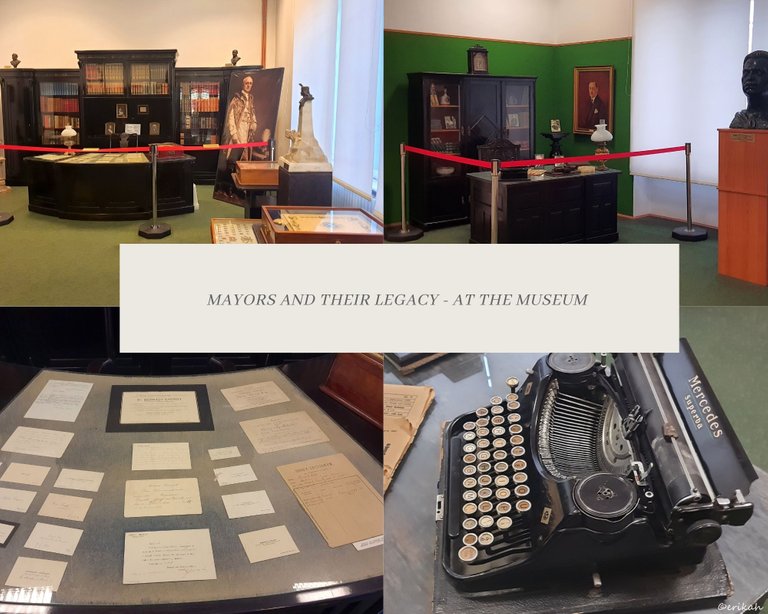
Targu Mures, or Marosvásárhely had a very good period when György Bernády was mayor. He had two terms in total, between 1900–1912 and 1926–1929. This is when the most impressive buildings of the city center were built, the Cultural Palace, the City Hall and the buildings situated in the old city center to be more precise.
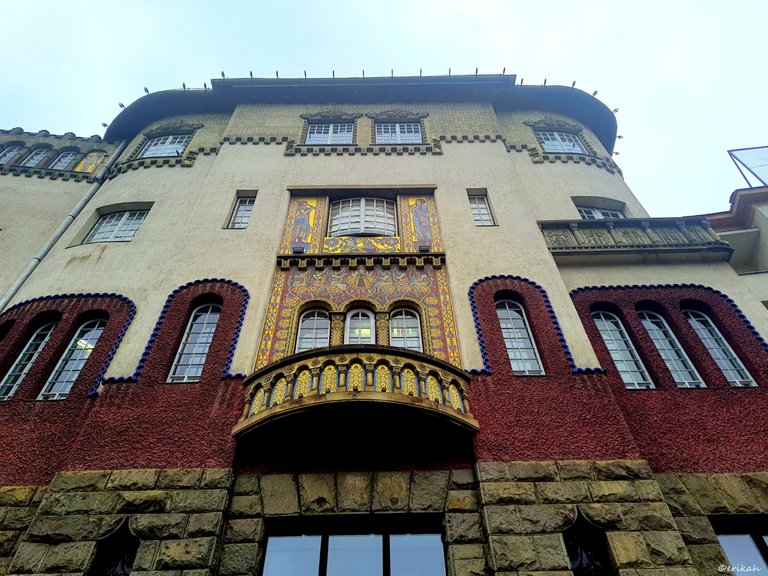
What you see on the photo above is the Cultural Palace, which was built during György Bernády's first term as mayor (1911 - 1913), has always had the role of hosting museums, expositions and cultural events, like symphonic concerts and plays.

György Bernády (1864 – 1938)
The bust of Bernády can be seen on the first floor of the Palace, in front of his office. This was not his real office as he's been already serving as mayor when the construction of the Palace started, This room was set up to feature his office and hosts all the things Bernády used during his terms.
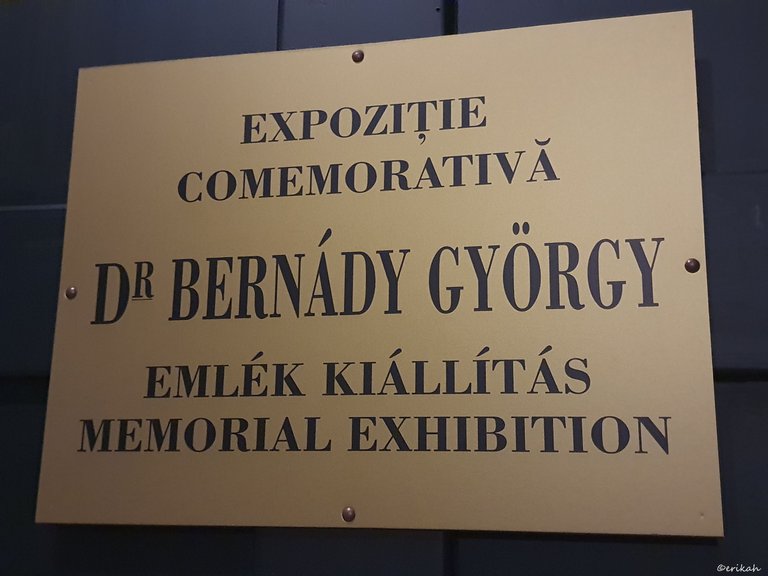

The biggest and most conspicuous item in the room is the life sized photo of the mayor.
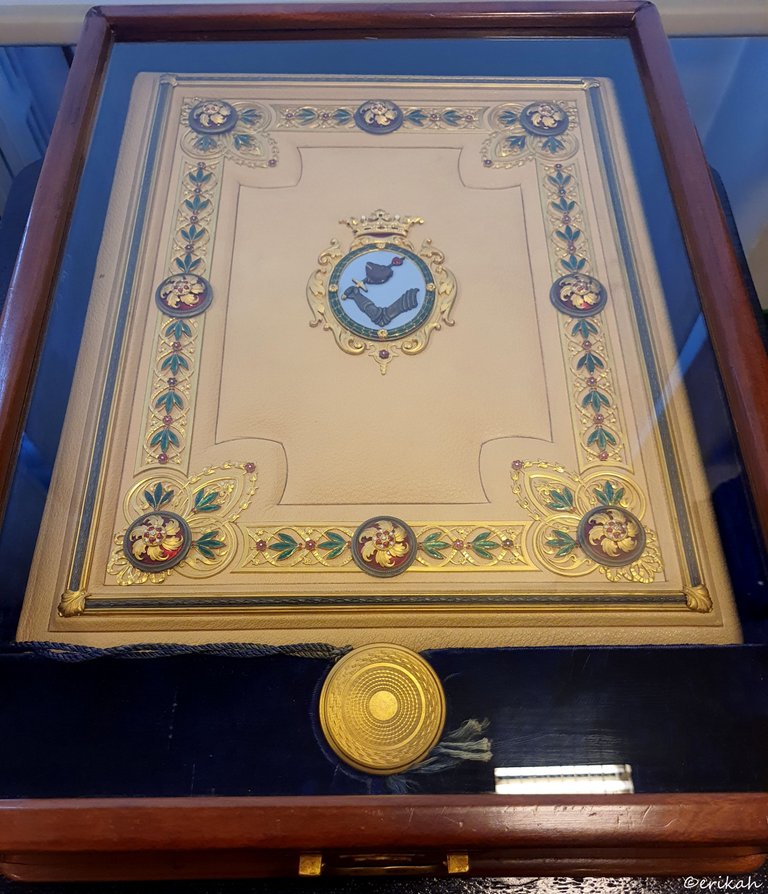
This is the crest of the city, a very nicely decorated item, that also holds the crown. Back in that period Transylvania was part of the Austro-Hungarian Empire, which ended in 1918.
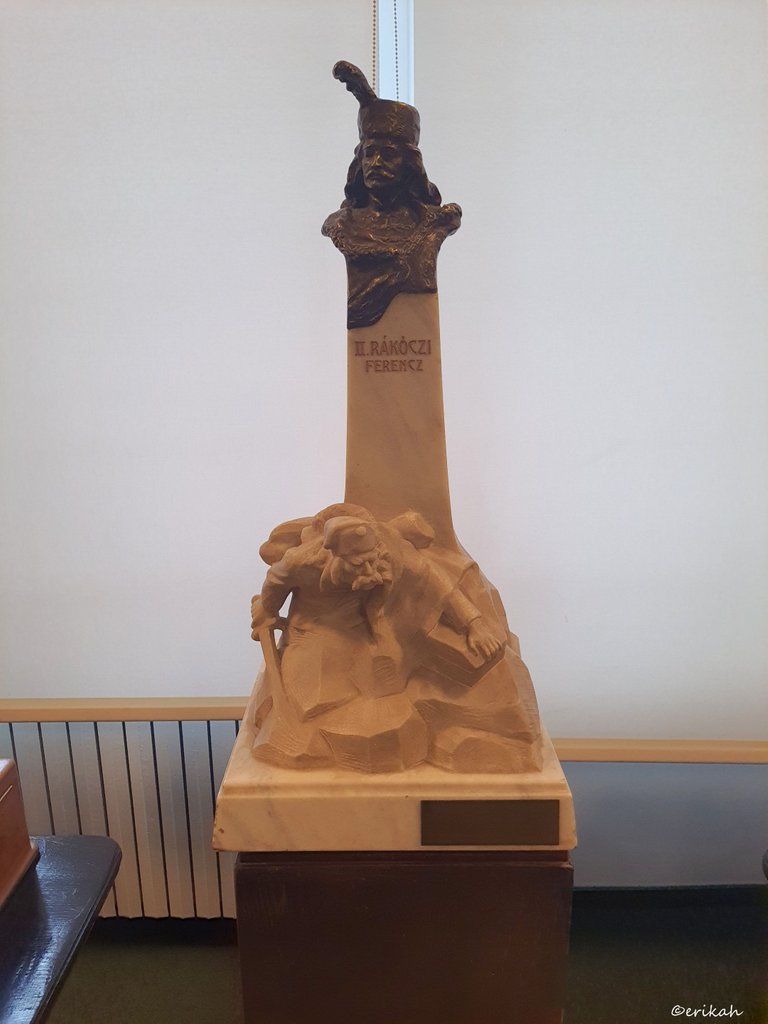
The miniature statue of Francis II Rákóczi, II. Rákóczi Ferenc in Hungarian, who was a
Hungarian nobleman and leader of the Hungarian uprising against the Habsburgs in 1703-11 as the prince of the Estates Confederated for Liberty of the Kingdom of Hungary. He was also Prince of Transylvania, an Imperial Prince, and a member of the Order of the Golden Fleece. Today he is considered a national hero in Hungary. source
A similar statue of Francis II Rákóczi can be found not far from the city center. Unfortunately I haven't been there to take a photo.
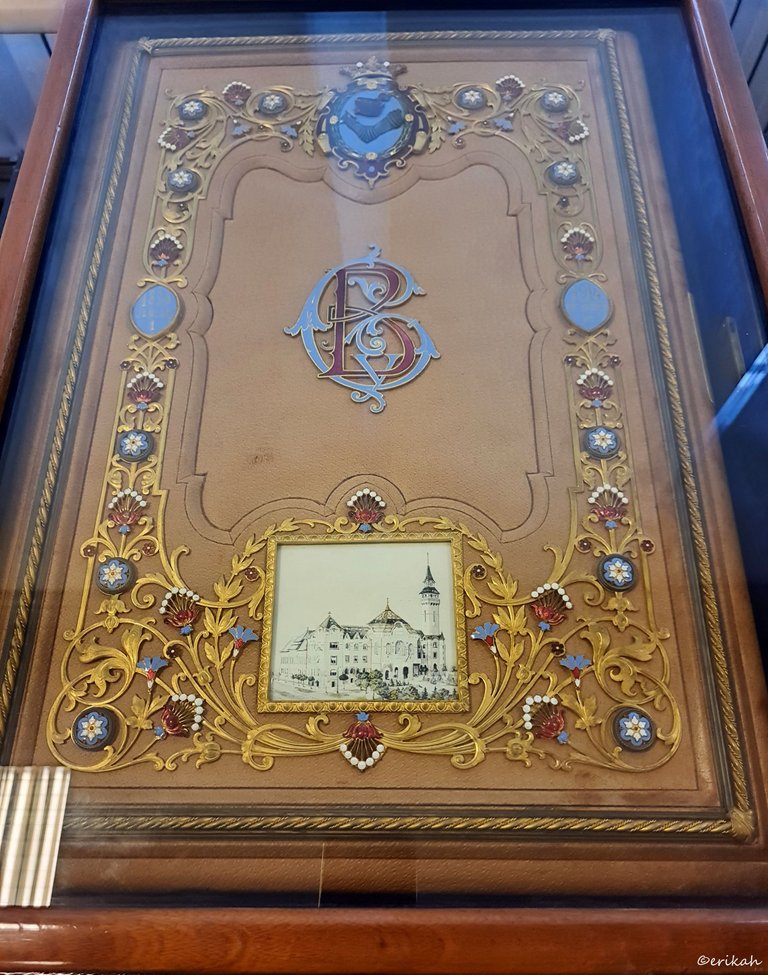
Another beautiful art piece, with the city crest and the crown, György Bernády's initials in the middle and the City Hall's photo.
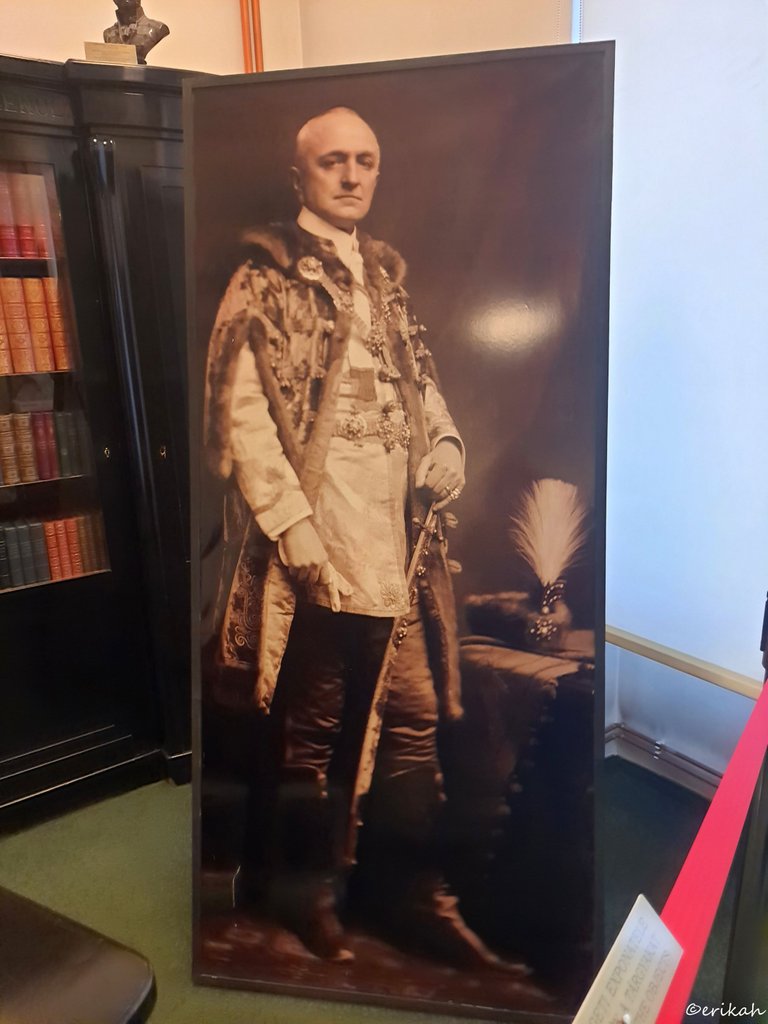
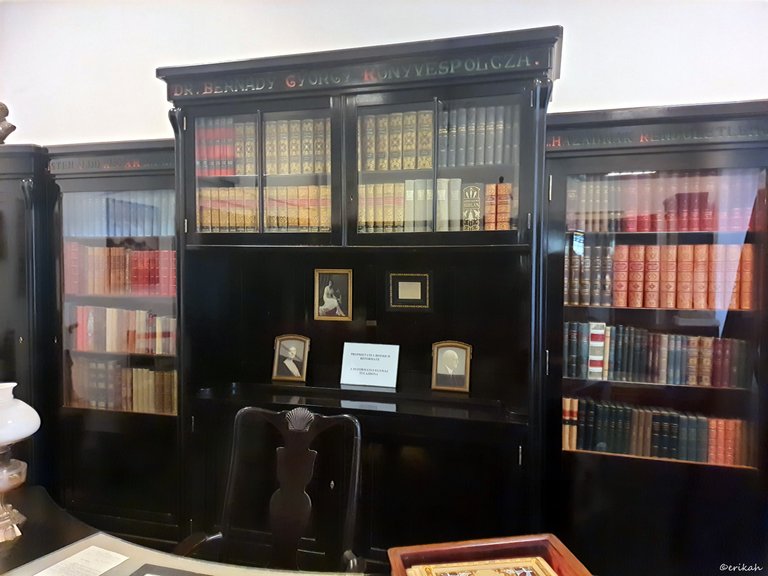
This was his bookshelf, personalized as his name is engraved in it at the top, using the old Hungarian language, which used "cz" instead of just "c". The books are all hard cover and mostly leather, which wasn't cheap and it is not cheap today either.
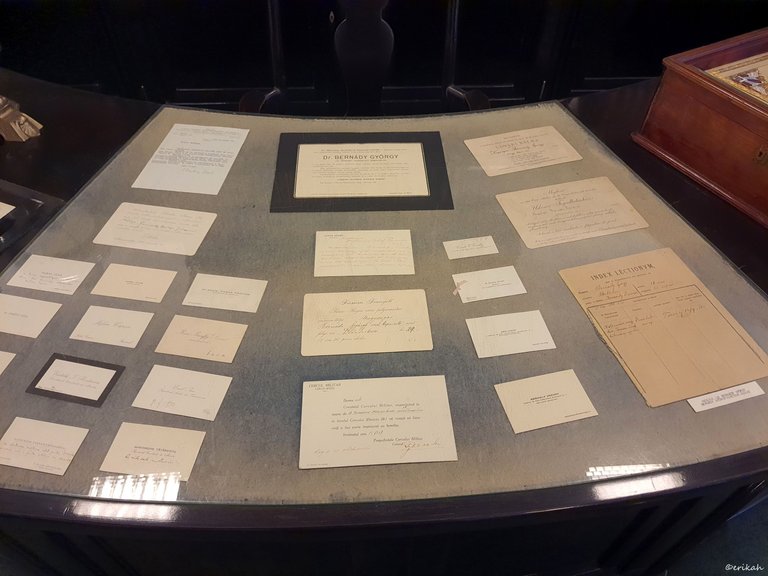
His desk with different, hand written documents of those times and his obituary at the top, with his personal information and the details about his funeral. He was laid to rest in the local reformed christian cemetery.
I should have taken better photos, using my flesh, but the truth is I entered this room not from the front entrance, but from another room and was happy that I can't see any "no photos" sign, so quickly took these photos and when I exited the room saw the sign. Ooooops.
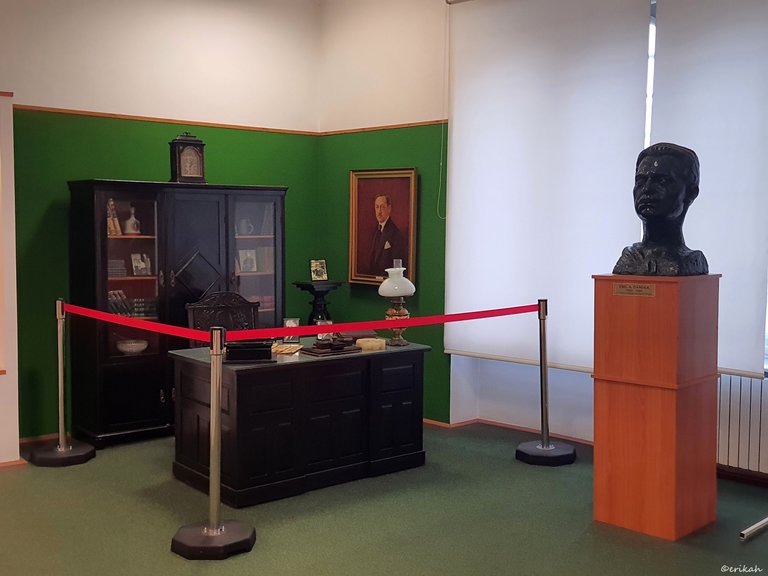
Emil Aurel Dandea (1893 – 1969)
Two mayors have statues in Targu Mures, one is György Bernády, the other is Emil Aurel Dandea, who was a
lawyer, publicist, director of Glasul Mureșului newspaper, Romanian politician and dignitary, member of PNL, mayor of Târgu Mureș between 1922 - 1926 and 1934 - 1937.
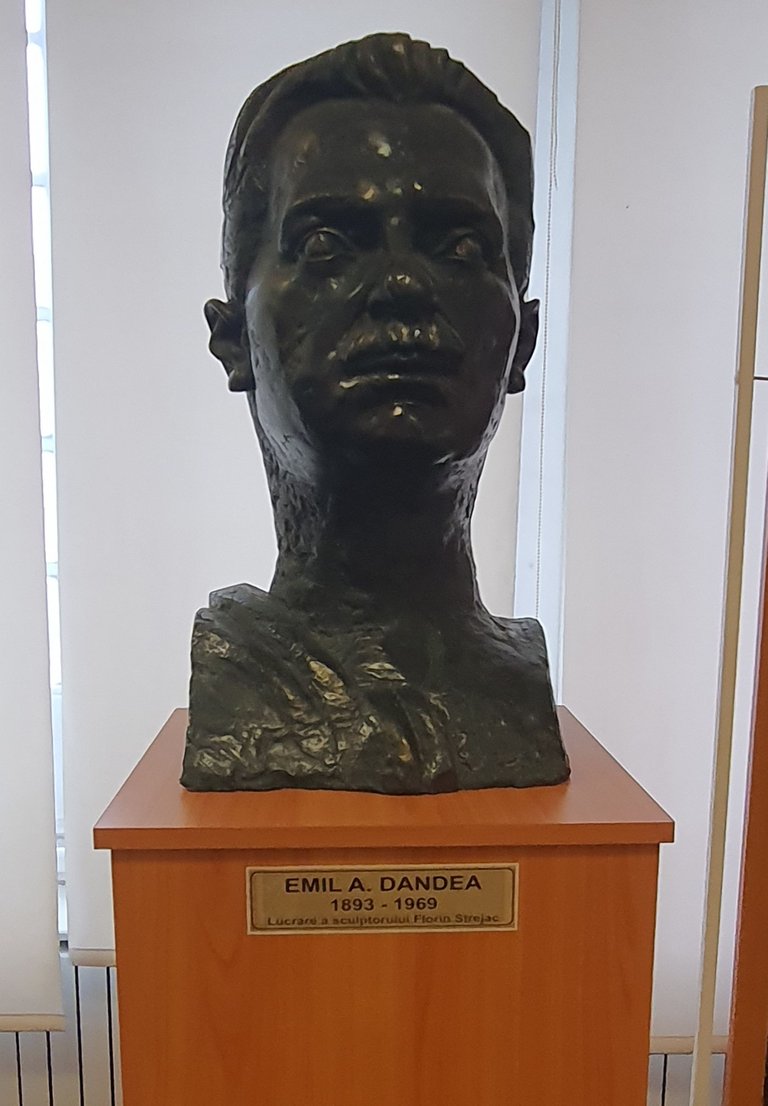
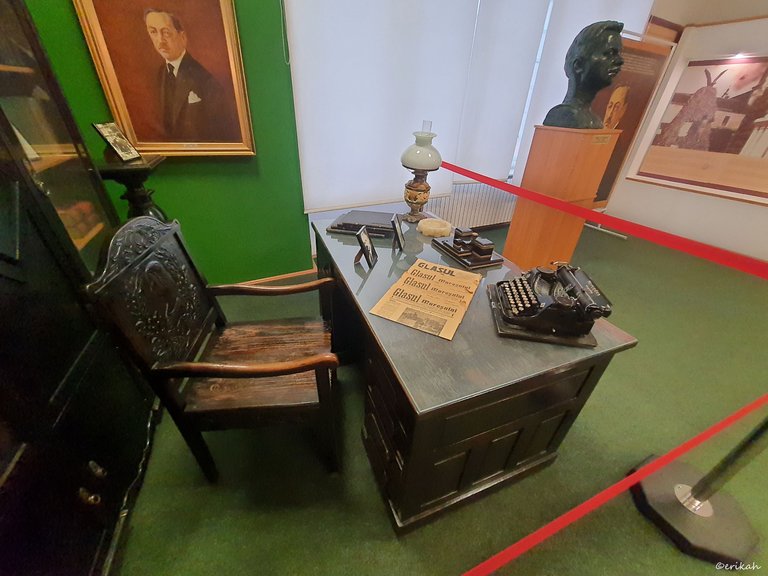
He was a publicist and on his desk you can see a few editions of the newspaper he was director at.
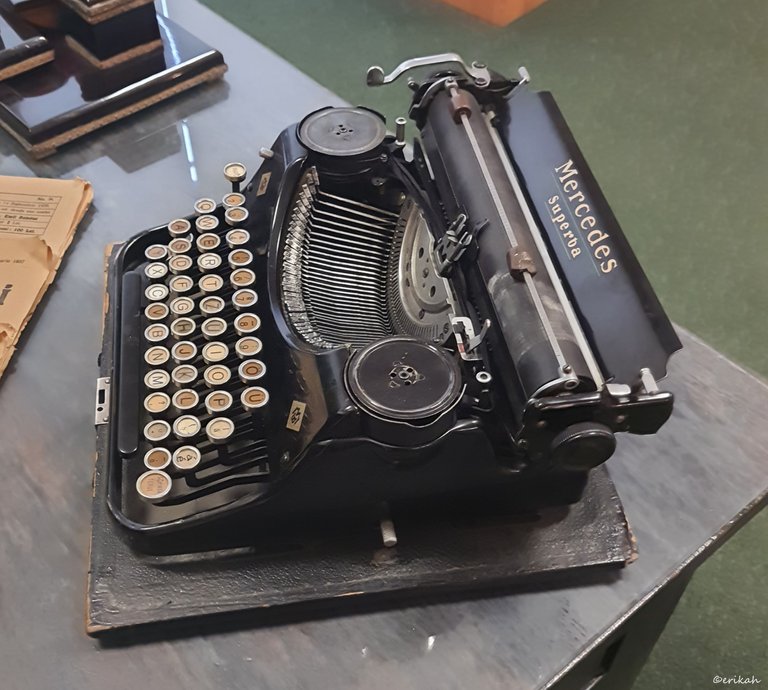
This is a typewriter of those times. I had the occasion to try out a few years ago and let me tell you, it's not as easy as typing on a keyboard. Basically you had to hit those keys with the same intensity to get the same result on every key. And another thing that not many know, typing was done with both hands and you has to know the place of each key, even with your eyes covered. I can still do that 😀
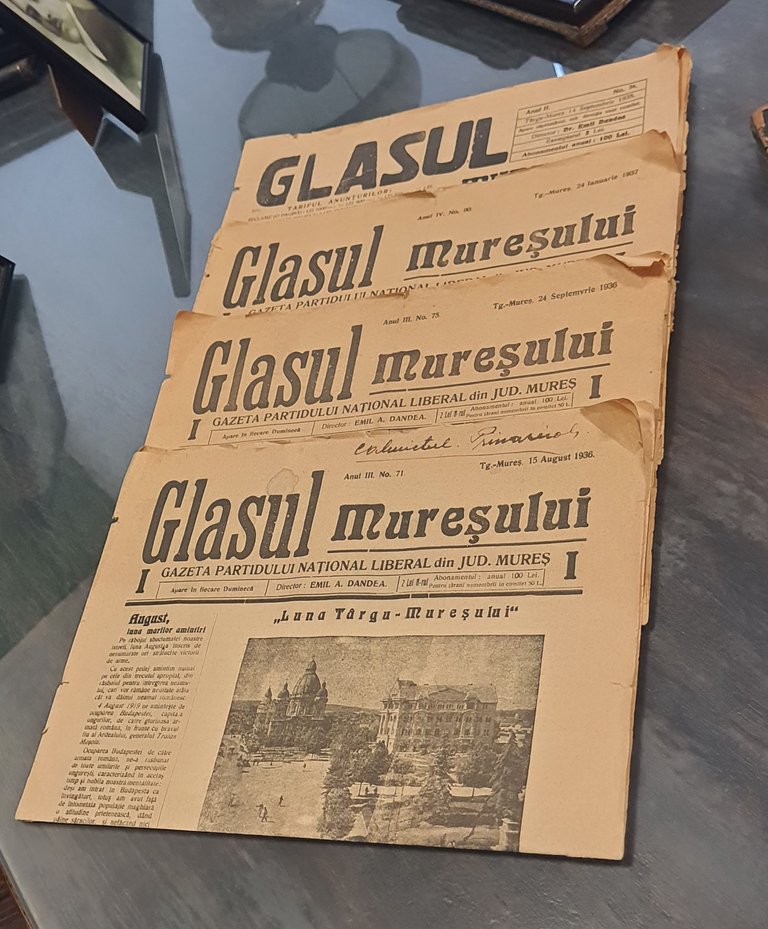
Newspapers from 1936, which are 86 years old now.
A Little Bit Of History
To those, who know very little or nothing about Transylvania, it may be confusing why I am using two names for cities, one Hungarian and the other Romanian, not necessary in this order. Transylvania has a rocky history and went through a lot between the two world wars and along with the region, the city of Marosvásáshely too, which became Târgu Mureș.
After World War I, together with the rest of Transylvania, Marosvásáshely became part of Romania and became known as Târgu Mureș. From having been an 89% Hungarian-populated city (in 1910), the Romanian population increased throughout the second half of the 20th century.
From 1940 to 1944, as a consequence of the Second Vienna Award, the city was ceded back to the Kingdom of Hungary. After Hungary was occupied by Germany in 1944, a Jewish ghetto was established in the city. Târgu Mureș re-entered the Romanian administration in October 1944. source
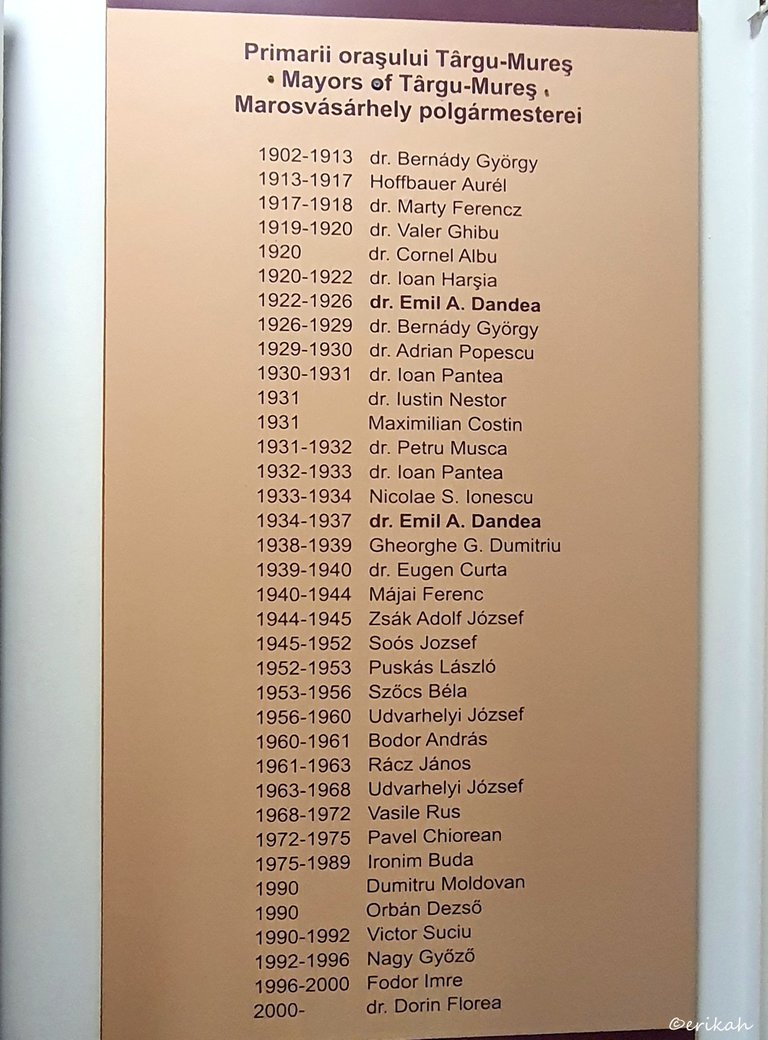
This is the list of the mayors elected by the city. From 1902 to 1918 there were three Hungarian mayors, from 1919 to 1926 there were four Romanian mayors, then between 1926 and 1929 György Bernády was mayor again. Between 1929 and 1940 all the mayors were Romanians, then in 1940, due to the Second Vienna Award, the city was ceded back to the Kingdom of Hungary and in 1944 the whole region was given to Romania. From 1940 to 1968 mayors were of Hungarian ethnicity, but as I said above the city was already part of Romania. From 1968 till the revolution in 1989 the mayors were again Romanians.
The sad reality is that starting from the first major change in history, which was after the first war ended in 1918, a lot of statues from the city center, featuring Hungarian personalities were demolished and Romanian statues were built. Then when the news came that based on the Second Vienna Award, the city will be ceded back to the Kingdom of Hungary, most of the Romanian statues were transported to Romanian territory. After the second world was over and Transylvania became part of Romania, communists took over and more monuments, buildings were destroyed, demolished.
With that much of disturbance, you can imagine how many statues and monuments have been destroyed over the years. However, there's a way to remember these and to document their existence and that is through the old postcards. Back in those days, postcards and letters were the only way of communicating with family and loved ones long distance. Every major event was celebrated with an issue of postcards. Buildings, monuments, statues were featured on the postcards and people who wrote messages on them were the witnesses, so to speak. Stamps and handwritten dates are the logs into the history books.
Two prominent figures of thee Hungarian history, Lajos Kossuth and Józef Zachariasz Bem. These statues were demolished in 1918 and so many other.
Postcards like this for example are testimonies of the past. You can see how the city looked like back then. This one dates back to 16 April 1901. The first postcard of Marosvásárhely was issued in 1897 buy the way and looked like this.

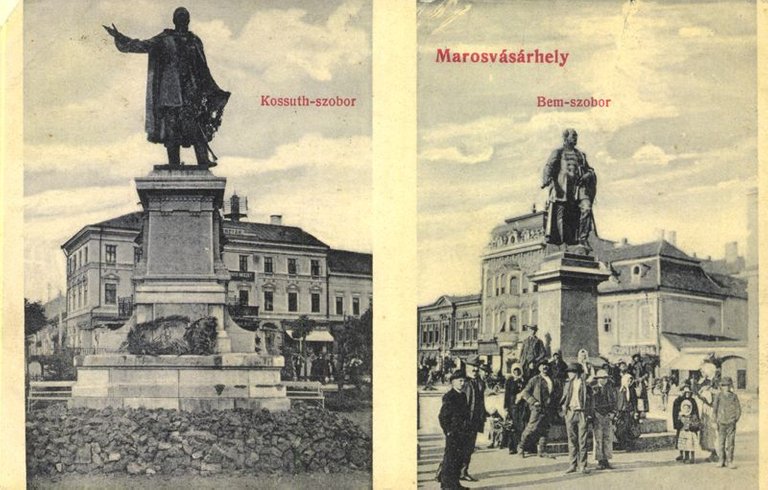
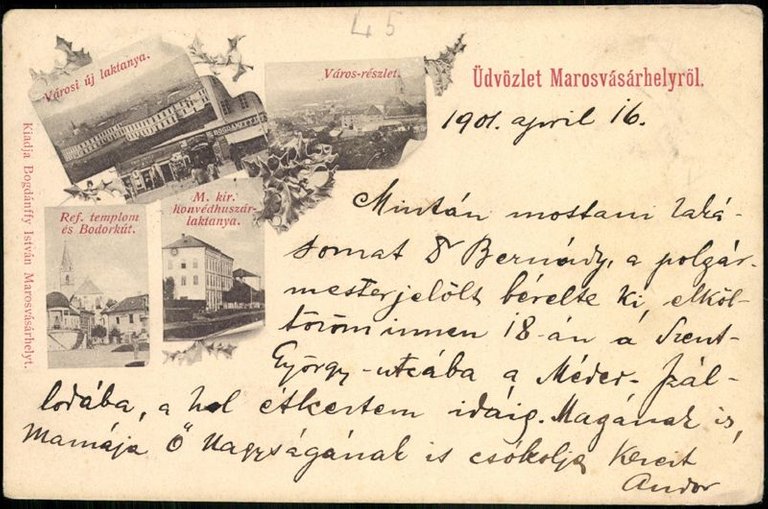
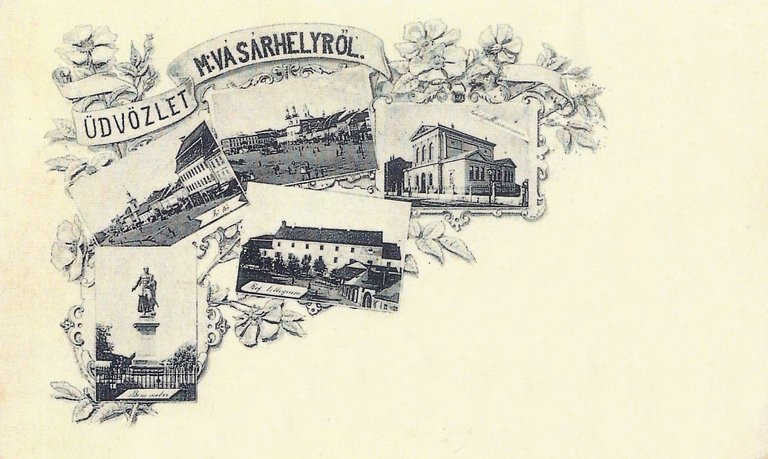
Your content has been voted as a part of Encouragement program. Keep up the good work!
Use Ecency daily to boost your growth on platform!
Support Ecency
Vote for new Proposal
Delegate HP and earn more
Thank you!
Congratulations, your post has been added to Pinmapple! 🎉🥳🍍
Did you know you have your own profile map?
And every post has their own map too!
Want to have your post on the map too?
Hey,
Reading your post actually managed to capture my attention as if I had been there.
Thank you, that means I did an acceptable job 😄
Namaste🙏 @erikah Sir, shared Museum having lots of historical things, i saw typewriter and i remember my student life when i learn typewriting😅. Thanks for sharing.
!PIZZA
I'm glad you liked. Those typewriters are indeed interesting and valuable as well due to their age.
Thanks for the pizza tokens.
Right sir thanks🙏
Sorry to disappoint you but I'm a woman.
Oh, please accept my apology🤦♂️🙏
Lol, no worries, I'm used to it. For some reason people think the majority of the users are man.
No i never thought about majority, actualy i am from india and hindi is our mother tounge. Even my hive name is not good idea-make-rich, most of the hivers think i am consultant or business man😥. While making hive id i was informed that i can upload my youtube channel content on hive, so i keep same my youtube channel name in hive
PIZZA Holders sent $PIZZA tips in this post's comments:
@idea-make-rich(3/7) tipped @erikah (x1)
Learn more at https://hive.pizza.
So that's where your interest in postcards comes from!!
Mostly, yes, but not only. I love the old style, the handwriting and the value of them is not something to neglect either.
Hiya, @LivingUKTaiwan here, just swinging by to let you know that this post made it into our Honorable Mentions in Daily Travel Digest #1413.
Your post has been manually curated by the @pinmapple team. If you like what we're doing, please drop by to check out all the rest of today's great posts and consider supporting other authors like yourself and us so we can keep the project going!
Become part of our travel community:
Lots of beautiful art works at the museum, they are captivating. You did great job getting beautiful pictures of art works in the museum
Thank you, I'm glad you like it. Thanks for stopping by.
History is the most valuable thing a human being has. Where we come from explains a lot about today. Thank goodness there were postcards to document what existed at one time. I keep postcards from my grandfather, he used to use them a lot, he loved them. Greetings and thanks for this wonderful post!